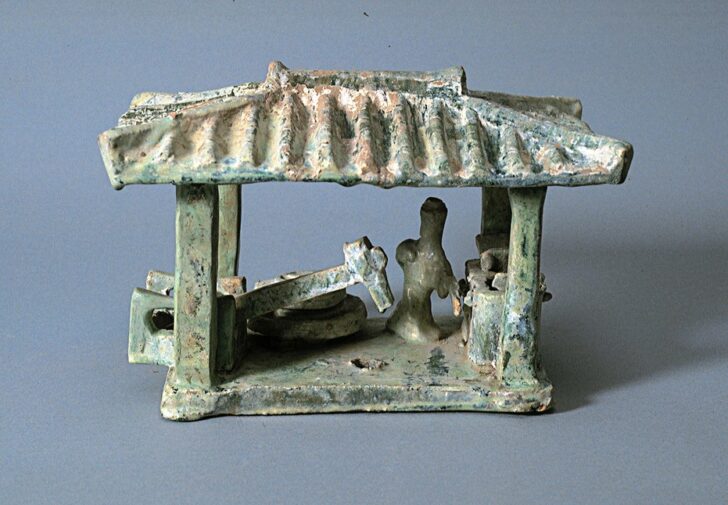Model of a hulling mill
Chinese

Description
Subject Matter:
This is a foot-operated hulling mill that replaced the earlier Hand-operated mills during the Han dynasty.
By the Western Han dynasty, basic household bowls, plates, basins, jars, and the like were produced in great quantity, not only for use in daily life but also specifically for tombs as mingqi (明器, literally "bright objects") as a way to provide for the deceased. As these mingqi included everything one would need during the afterlife, these objects reflected daily life during the Han. Mingqi could include houses, towers, gates, granaries, livestock pens, chicken coops, wells, cooking stoves, storage vessels, dishes, incense burners, and lamps; they were also figures such as horses, dogs, anthropomorphic animals, officials, guardians, servants, and entertainers. The number of ceramic mingqi items in a tomb could reach numbers of a few to several hundred objects.
Physical Description:
This model of a hulling mill consists of a treadle operated tilted pole connecting to a hammer that crushes the grain, with an operator and storage bins. It sits below a four-posted one-bay structure with a hipped roof with ridge lines, imitating contemporary tiled roofs. The model is covered in a green lead glaze with iridescence and calcification.
Usage Rights:
If you are interested in using an image for a publication, please visit https://umma.umich.edu/request-image/ for more information and to fill out the online Image Rights and Reproductions Request Form.